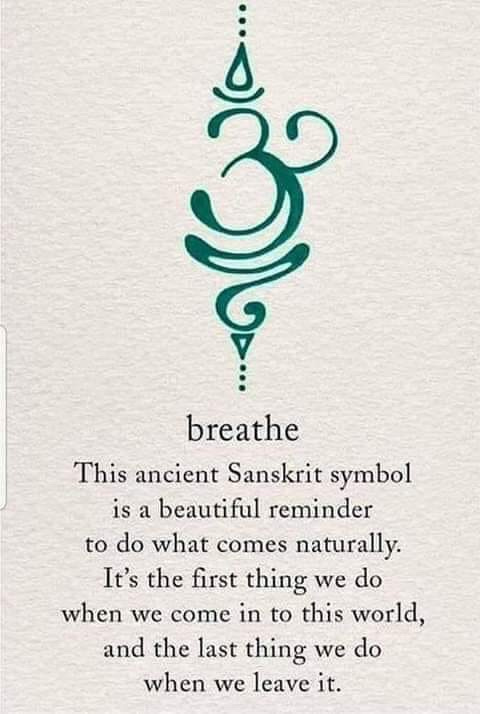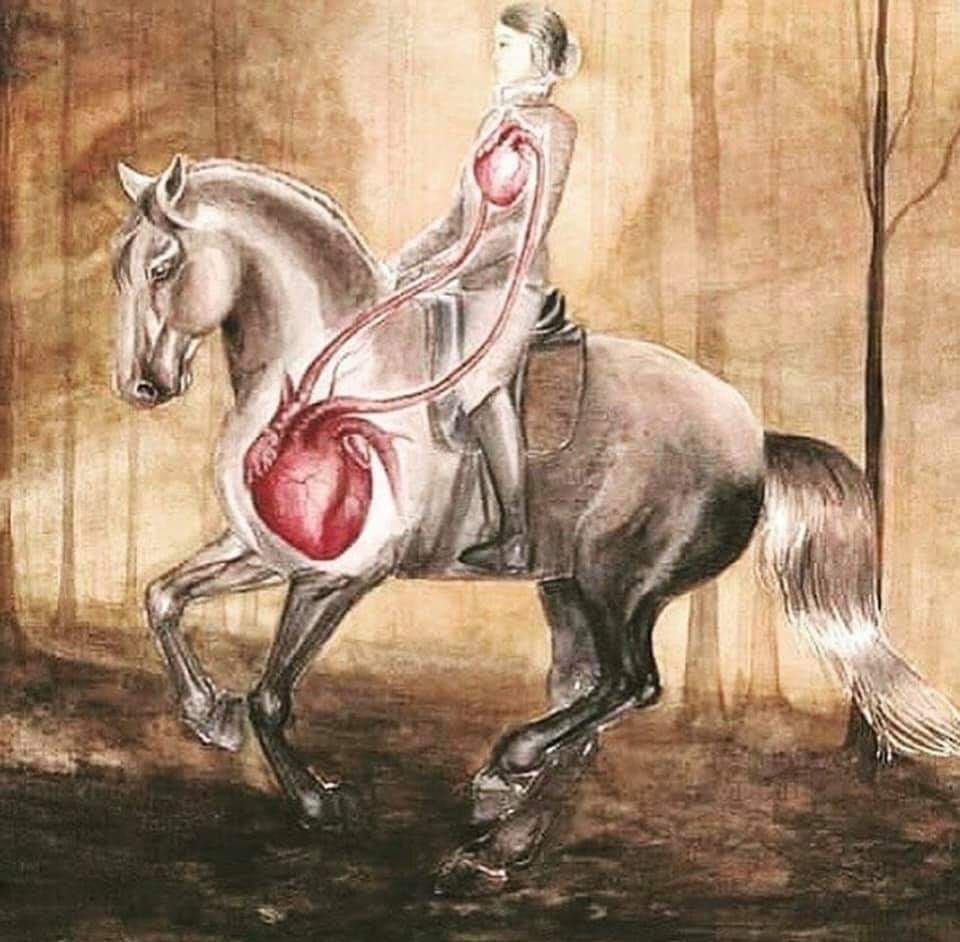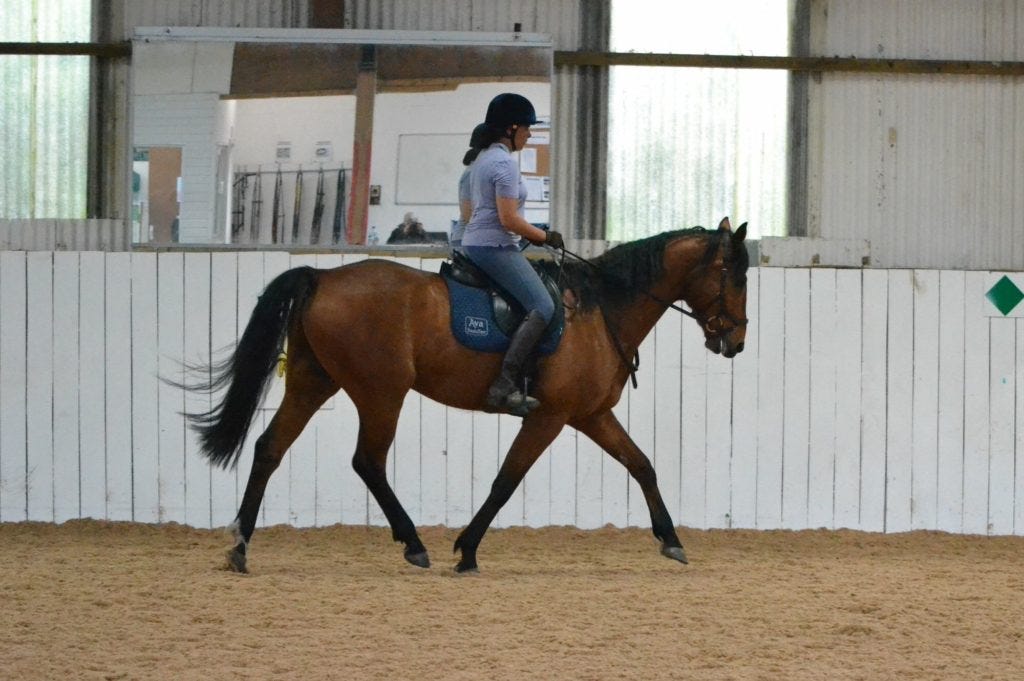"Being Seen, Being Heard, Feeling Felt and Getting Gotten"
Connection and communication versus control or coercion. Introducing conversation and consent.
First a plea- if you enjoy my writing then do please LIKE or drop a COMMENT.
I have been playing with the concepts of connection and communication in riding, rather than control or coercion. And pondering the possibility of consent.
In some ways, I do ask for the consent of my horses. I wait for them to take a step towards me in the field before I put the head-collar on. I allow them to sniff the brushes before I get stuck into grooming. I acknowledge that Cal has a very ticklish stomach and I am careful which brush I use to get the mud off. More work for me, but it's more pleasant for him. I pick the mud out of his ears by hand scratching. I make sure the horses all offer me the hoof that I want to clean out. In the UK, when we had stables, and I still had Rocky, the horse should come to the front of the stable, with the saddle on the door, so they are volunteering to be ridden. Both Cal and Rocky liked to have a good empty before I put the saddle on- I allowed them the time to do this.
If we truly seek partnership with our horses, it follows that they should be allowed, able and comfortable to offer an opinion.
A few years ago, the clutch on my truck failed the day before a very important 3-day dressage clinic. My friend and surrogate “Pony Club mum” very kindly lent me her 7.5 tonne truck. Her horses had all been terrible travellers as long as I had known her but they were all related, out of the same mare, and I thought they were ‘just highly strung’. Cal had always loaded and travelled beautifully. By day 3 of the 3 day weekend Cal was refusing to get in my friend's 7.5 tonne lorry. It looked like a great truck, newer than mine, well maintained, airy, spacious, but there must have been something very peculiar about the suspension and the ride. Funnily enough, the friend went on to get a new truck and her current crop of horses all load and travel beautifully!
A few years later, the ramp on my truck needed redoing. It used to be carpet with wooden struts and I changed it to posh looking rubber matting that would be easier to clean. Big mistake as it turned out- the rubber matting became slippery when wet. Cal became reluctant to load one day after slithering on the ramp once or twice in the wet weather. I talked to him and told him I understood why loading was tricky, and I promised him I would sort it. I ordered some sticky backed gorilla grip tape- as it turned out I never needed it. The weather, and the ramp, were simply too wet to apply the tape for the winter months, and by the time the weather changed we had reached an understanding. Horses may not understand words but they understand intent. Knowing that I registered his comments and acknowledged them was enough to persuade him to load.
Others may have escalated the pressure in that situation and compounded the negative association with loading. That would have been counter- productive. I knew exactly why he was hesitating to step on the ramp- why would I punish him for being careful?
If horses are not in a mental and physical balance that enables them to complete the task requested then they will express that inability, as stiffness or resistance, or perhaps even as a big explosion. Our job as riders is to set them up for success.
Balance before movement
Mental balance and physical balance are intimately related in horses. The flight response is all about stiff muscles, a braced spine, ready to flee. Horses will say- I can't do that with this body. Or the flip side of the dilemma- I can't do that in this moment with this brain.
If we can change that response we can enable better choices.
If the horse needs a moment to check something strange and scary when they are out hacking, until they are happy before walking past, then surely that is fine? Horses have no concept of time- stay a second or stay 10 minutes- they have no idea. Rocky used to play reverse and go forwards with stuff he wasn't sure about- if I waited and breathed and let the process happen at his speed- obviously praising the forwards but not over-stressing or fighting the backwards- it would sometimes take 3 or 4 reverses, often making rapid backwards progress, with the last one being the furthest back but he would always psych himself up to walk or even trot past the scary object in a calm and curious manner. If I got cross or agitated or impatient and pushed him beyond his comfort zone then things could quickly deteriorate. As long as I was patient, allowed him to think and process, at his pace, then he was much more willing to let me encourage him past the less scary stuff. It is all about an ongoing conversation.
It can all change with a heartbeat.
There is a scientific experiment that tells us a horse's heart emits 40 times more electromagnetic force than the tiny little human heart. Horses in a herd use this force field effect to synchronise their heartbeats. When a horse on the edge of the herd sees or senses something suspicious, their heartbeat will speed up. The rest of the herd feel this increase in heart-rate and are suddenly equally on high alert.
You can find the webinar explaining the original research into heart rate synchronicity between horses and humans here https://www.heartmath.org/resources/downloads/heart-heart-communication-horses/
We can use this synchronicity effect to our advantage when riding or training. The vagus nerve is the nerve of para-sympathetic innervation. The para-sympathetic nervous system prevents the body from overworking and restores the body to a calm and composed state. It can be described as the "rest and digest" system. In simplistic terms, this is the opposite to the "flight or fight" response, activated by the sympathetic nervous system. Nervous system adaptability is crucial to help animals cope with environmental stressors. We can hack our nervous system relatively easily- if we breathe out slowly so that the OUT breath is longer than the IN breath, this activates the vagus nerve, and therefore favours para-sympathetic innervation. Calm returns.
You can test this slowing effect of the vagus nerve by feeling your own pulse, or your dog’s heart-beat when he is lying next to you. When you breathe out long and slow, your heart beats a touch slower than when you breathe in. My dog has quite a marked heart rate variability when he is relaxed.
Just breathe
Breathing out while in the saddle also activates your diaphragm-seat connection. A good slow out breath pulls you deeper into the saddle, onto the back of your seat- bones. The horse will feel your calm, slow heart-beat, from as far as 4 feet away apparently, and theirs will synchronise to match. That is how they are programmed.
Conversely, if you tighten and tense up and breathe short sharp shallow breaths under tension, then the sympathetic "fight or flight" system takes over. We tend to tighten up, subconsciously, putting us into a grip and clutch survival posture, tilting forward and sitting on the front of our pelvis, and our heartbeat speeds up.
And the horse will feel this, and synchronise to the faster human heartbeat, which makes them anxious too. A horse at rest has a pulse of 24-48 beats a minute- this is much slower than the human average of 60-100. To be sharing calm with our horses, we need to very consciously make sure we are at the bottom end of this human range.
The meaning of dressage comes from the word root of "dress" or "to straighten". The creation of a straight or "well dressed" horse is the purpose of dressage. And a straight or well dressed horse is able to perform any task required in that moment, assuming that the task requested has been prepared for with appropriate training and conditioning work, and the horse is in a mental state that allows cooperation.
With Rocky I realised that I had to apply equal emphasis to the mental as well as physical balance. With a big, athletic and gifted horse, the sympathetic nervous system "no" can be too loud and too explosive to allow constructive dialogue. It is impossible to have an ongoing conversation when we have parted company with our horse.
You could replace the word obedience to with the ability to correctly respond in the moment and then you may avoid the negative impressions associated with the phrase “mental submission”.
For me I think of submission more as availability: the horse offering its beauty and power in perfect mental and physical balance to the rider. The perfect ride should look like a pair of dancers or figure skaters jamming for fun - “what moves shall we mess with next?”
So I breathe. And sit relaxed and loose. And deliberately slow my heart. And then we can talk. And hopefully one day we will come to dance, two hearts beating as one.









